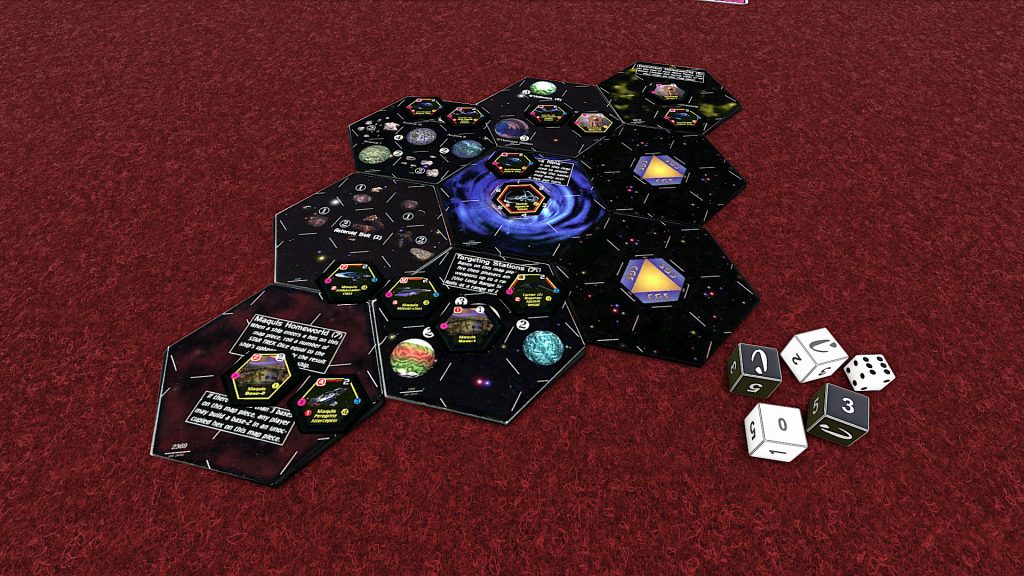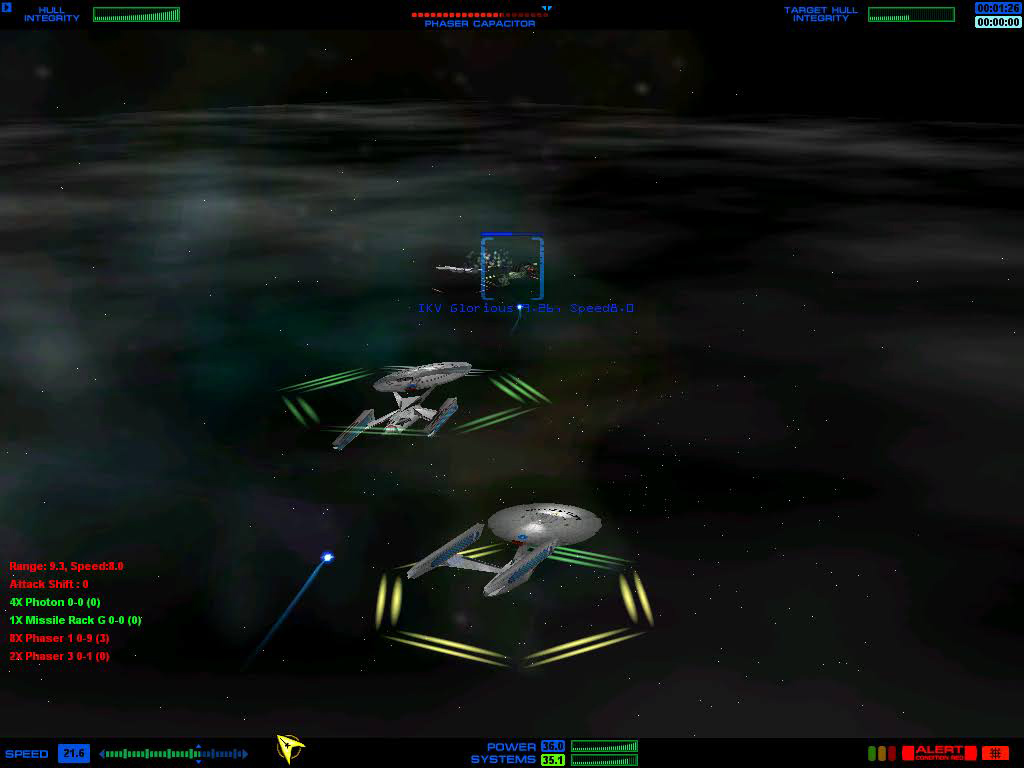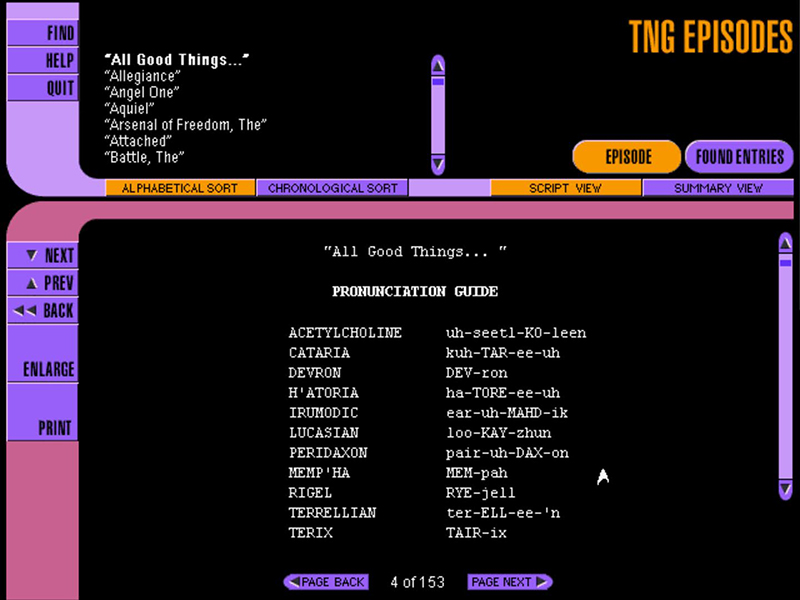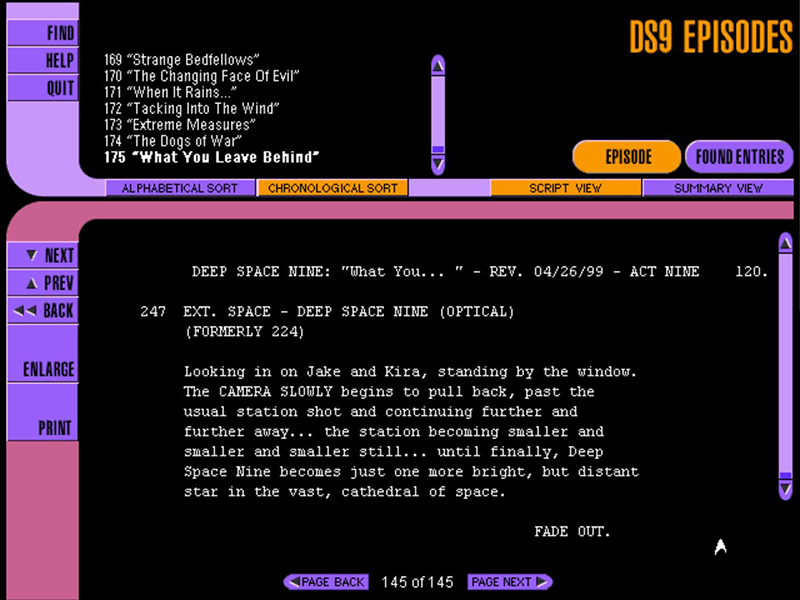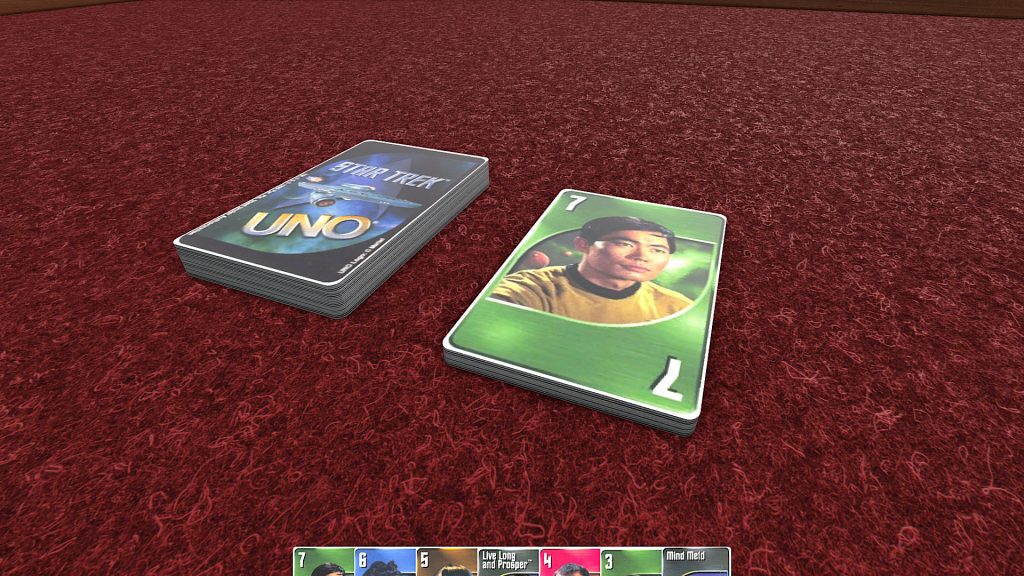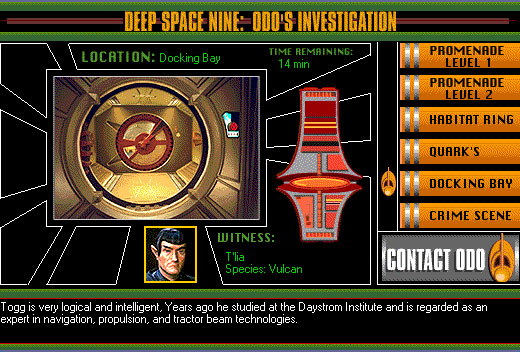Star Trek: The Next Generation: A Final Unity
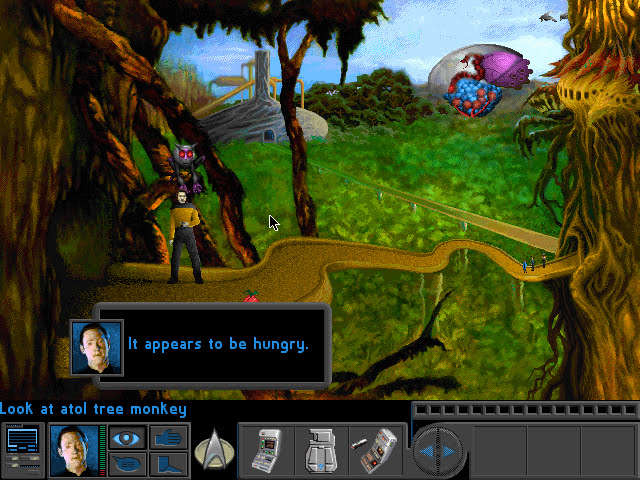
This feels like a Next Generation movie. It’s a point and click adventure that starts off with a few loose plot points and missions that all start coming together as the Federations, Romulans and a newly discovered race called the Chodak (who also appear in Future’s Past with a similar plot) race to find a device that can alter reality anywhere in the galaxy. It’s all voiced by the cast of The Next Generation, with all the main crew getting pivotal moments in the story (although Troi’s main input is astrology, her empath and counselling isn’t really used in the game).
The game has multiple levels of depth and control. On the Enterprise, you can choose to manually alter repair teams and power output or let La Forge handle it for you. In ship combat, you can control the Enterprise manually or delegate it to Worf. Although the combat is very broken on modern systems, so letting Worf handle it is the only option (the system looks quite in depth). Ships exploding also tends to crash he game, so be sure to save, but luckily the Enterprise D mainly faces stripped down Romulan warbirds and Worf handles them with ease – although one odd thing about this game is that every enemy self destructs once defeated.
On away missions, you can also manually select an away team or let the game choose for you. While the first is nice for hearing different dialogue, you often need a specific character to perform a task and going back to the Enterprise and returning is a big faff, so it’s best to stick to the game’s recommendation. I think it rotates the cast quite nicely so they all have a part to play.
For the point and click puzzles, they start off great with lots of interactions that make sense, unfortunately the game devolves to extremely obscure solutions and objects you interact with can blend in with the background. It even has multiple moments where you can fail the game, but the game doesn’t tell you and lets you carry on. Although sometimes there are multiple solutions. There’s one part where you get to solve a puzzle if you pick up a random bit of metal (a paper clip), other wise you’ll have to shoot some sensors.
Even with those issues, A Final Unity is a great game and is well worth it for the story. It’s a shame that this hasn’t gotten a re-release that makes it easier to play (installing the game is a faff) and fixes up a few of the issues.
Star Trek: The Next Generation (Grandstand LCD)

Another obscure Star Trek LCD game. This one looks like it was sold under both the Grandstand and Tiger names, both with the same design. It’s also different to the previous Tiger handheld, although a similar idea. In this you just have to dodge to blow up asteroids.
Star Trek Omnipedia

Trivial Pursuit The Sci-Fi Master Game: Star Trek Edition

A VHS add-on to Trivial Pursuit. This features clips and questions from the original series plus the six films.
Star Trek: Deep Space Nine: Harbinger

DS9 Harbinger is a Myst-style adventure game. Each part of the level is made up of still images, with you clicking the edge of the screen to move around and turn in very limited places. This allows the game to look very impressive visually, especially in screenshots. The 3D models of the characters look vert impressive for the time and everyone is wonderfully voice acted, using the original cast of DS9.
You play a diplomat named Bannick, called to DS9 to assist an ambassador in speaking with a new alien race called the Scythians. These aliens speak in an unusual manner and nobody other than the ambassador has been able to figure it out. As you reach DS9, you get attacked by drones (in an impressive FMV cutscene) and crash land. The drones stat building up to attack DS9. To make matters worse, when you visit the ambassador you discover that he has been murdered. You need to solve the murder, work out how to talk to the Scythians and find a way to stop the drones.
The part of the game on DS9 is great (once you get your head around navigating the station), with lots of conversation options and an intriguing mystery. Puzzles are mostly self-enclosed, leaving you to focus more on the narrative mystery.
In a few parts of the game, you have to man the weapons of DS9 (and a runabout). These sections are just click to shoot, but are surprisingly difficult and not fun at all.
The latter half of the game, once you leave DS9, is much more of a challenging puzzle game like Myst, where you have to navigate a maze (not easy due to how you move, working out how to ger around DS9 was difficult enough), and is very much a chore, especially as you have large periods with no talking. That said, working out how to trick the AIs in charge and talking to them towards the ends is a lot of fun.
Unfortunately, they couldn’t get the full cast of DS9 for this game, so O’Brien and Bashir are said to be on a mission (Worf hasn’t joined the cast yet). You do get to spend plenty of time with Sisko, Odo, Dax, Quark and Kira, though, so there’s still a lot of interaction with the crew.
Star Trek: Klingon
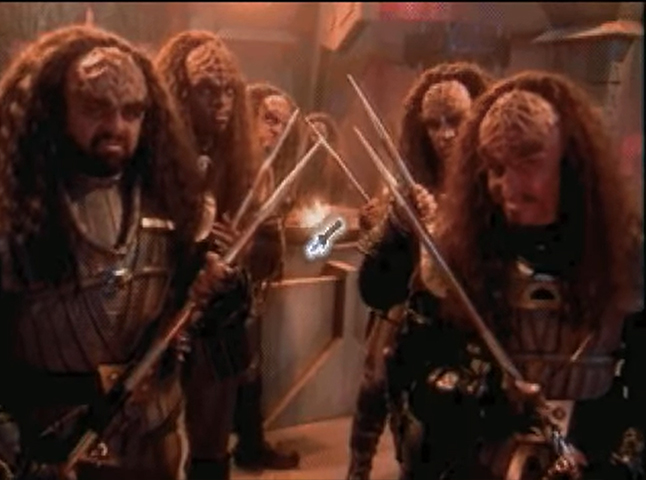
This is an interactive movie game, where you watch clips before being presented with a choice. Where you click on (or choosing not to click) will either end the game or let you proceed.
This is presented as a holonovel made by Gowron (Robert O’Reilly), where he wants to teach weaklings about how to be a true Klingon so you can be a worthy opponent. In the holonovel, you take the place as a Klingon boy on his Rite of Ascension when his father stops an assassination attempt on Gowron. You then embark on a journey to find out who is behind everything.
The game aspect of this is quite poor, as all but the right option lead to someone shouting at you and the game resetting to just before – the Borg game is much more creative in terms of using the interactive movie mechanic. The story, however, is interesting with some fun moments. It’s a good insight into Klingon culture. On YouTube, there are two ways of watching this: if you want to enjoy the story, you can watch the “correct path” version, which turns it into a fun Klingon episode of Star Trek. You can also watch a version with all the failure clips, with lots of wonderful overacting.
Star Trek: Klingon Language Lab
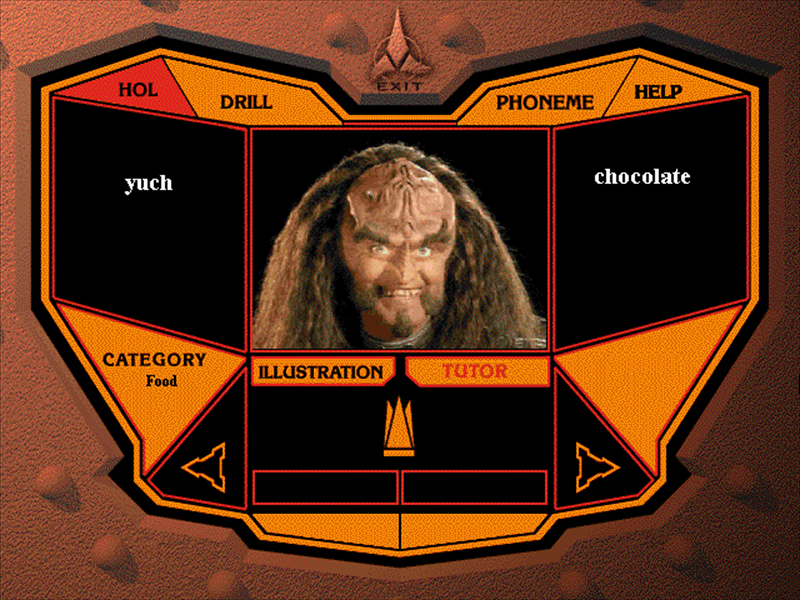
Released alongside Star Trek: Klingon, this software is an introduction to the Klingon language. It features Robert O’Reilly as Gowron who reads out all the Klingon words and phrases – each one has a video of him saying it, too. It has right categories, each with its own quiz to test your skills, which seem on a similar level to Duolingo.
It also features a section that helps you with the individual phonemes. While there’s only a limited amount of words and phrases, it’s a decent introductory language tool.
- Original Release: 1995
- Developer: Spectrum HoloByte
- Publisher: Spectrum HoloByte
- Platform: MS-DOS

This feels like a Next Generation movie. It’s a point and click adventure that starts off with a few loose plot points and missions that all start coming together as the Federations, Romulans and a newly discovered race called the Chodak (who also appear in Future’s Past with a similar plot) race to find a device that can alter reality anywhere in the galaxy. It’s all voiced by the cast of The Next Generation, with all the main crew getting pivotal moments in the story (although Troi’s main input is astrology, her empath and counselling isn’t really used in the game).
The game has multiple levels of depth and control. On the Enterprise, you can choose to manually alter repair teams and power output or let La Forge handle it for you. In ship combat, you can control the Enterprise manually or delegate it to Worf. Although the combat is very broken on modern systems, so letting Worf handle it is the only option (the system looks quite in depth). Ships exploding also tends to crash he game, so be sure to save, but luckily the Enterprise D mainly faces stripped down Romulan warbirds and Worf handles them with ease – although one odd thing about this game is that every enemy self destructs once defeated.
On away missions, you can also manually select an away team or let the game choose for you. While the first is nice for hearing different dialogue, you often need a specific character to perform a task and going back to the Enterprise and returning is a big faff, so it’s best to stick to the game’s recommendation. I think it rotates the cast quite nicely so they all have a part to play.
For the point and click puzzles, they start off great with lots of interactions that make sense, unfortunately the game devolves to extremely obscure solutions and objects you interact with can blend in with the background. It even has multiple moments where you can fail the game, but the game doesn’t tell you and lets you carry on. Although sometimes there are multiple solutions. There’s one part where you get to solve a puzzle if you pick up a random bit of metal (a paper clip), other wise you’ll have to shoot some sensors.
Even with those issues, A Final Unity is a great game and is well worth it for the story. It’s a shame that this hasn’t gotten a re-release that makes it easier to play (installing the game is a faff) and fixes up a few of the issues.
Star Trek: The Next Generation (Grandstand LCD)
- Original Release: 1995
- Developer: Grandstand
- Publisher: Grandstand
- Original Platform: Electronic Handheld
- Not played: Too expensive to get second hand.

Another obscure Star Trek LCD game. This one looks like it was sold under both the Grandstand and Tiger names, both with the same design. It’s also different to the previous Tiger handheld, although a similar idea. In this you just have to dodge to blow up asteroids.
Star Trek Omnipedia
- Original Release: 1995
- Developer: Imergy
- Publisher: Simon & Schuster
- Platform: PC
- Also Known as: Star Trek Encyclopaedia
- Version played: Encyclopaedia 3.0

Trivial Pursuit The Sci-Fi Master Game: Star Trek Edition
- Original Release: 1994
- Developer: Telstar Video
- Publisher: Telstar Video
- Original Platform: Board Game
- Not played: Too expensive to get second hand (plus converting the VHS)

A VHS add-on to Trivial Pursuit. This features clips and questions from the original series plus the six films.
Star Trek: Deep Space Nine: Harbinger
- Original Release: 1996
- Developer: Stormfront Studios
- Publisher: Viacom New Media
- Platform: MS-DOS

DS9 Harbinger is a Myst-style adventure game. Each part of the level is made up of still images, with you clicking the edge of the screen to move around and turn in very limited places. This allows the game to look very impressive visually, especially in screenshots. The 3D models of the characters look vert impressive for the time and everyone is wonderfully voice acted, using the original cast of DS9.
You play a diplomat named Bannick, called to DS9 to assist an ambassador in speaking with a new alien race called the Scythians. These aliens speak in an unusual manner and nobody other than the ambassador has been able to figure it out. As you reach DS9, you get attacked by drones (in an impressive FMV cutscene) and crash land. The drones stat building up to attack DS9. To make matters worse, when you visit the ambassador you discover that he has been murdered. You need to solve the murder, work out how to talk to the Scythians and find a way to stop the drones.
The part of the game on DS9 is great (once you get your head around navigating the station), with lots of conversation options and an intriguing mystery. Puzzles are mostly self-enclosed, leaving you to focus more on the narrative mystery.
In a few parts of the game, you have to man the weapons of DS9 (and a runabout). These sections are just click to shoot, but are surprisingly difficult and not fun at all.
The latter half of the game, once you leave DS9, is much more of a challenging puzzle game like Myst, where you have to navigate a maze (not easy due to how you move, working out how to ger around DS9 was difficult enough), and is very much a chore, especially as you have large periods with no talking. That said, working out how to trick the AIs in charge and talking to them towards the ends is a lot of fun.
Unfortunately, they couldn’t get the full cast of DS9 for this game, so O’Brien and Bashir are said to be on a mission (Worf hasn’t joined the cast yet). You do get to spend plenty of time with Sisko, Odo, Dax, Quark and Kira, though, so there’s still a lot of interaction with the crew.
Star Trek: Klingon
- Original Release: 1996
- Developer: Simon & Schuster
- Publisher: Simon & Schuster
- Platform: PC

This is an interactive movie game, where you watch clips before being presented with a choice. Where you click on (or choosing not to click) will either end the game or let you proceed.
This is presented as a holonovel made by Gowron (Robert O’Reilly), where he wants to teach weaklings about how to be a true Klingon so you can be a worthy opponent. In the holonovel, you take the place as a Klingon boy on his Rite of Ascension when his father stops an assassination attempt on Gowron. You then embark on a journey to find out who is behind everything.
The game aspect of this is quite poor, as all but the right option lead to someone shouting at you and the game resetting to just before – the Borg game is much more creative in terms of using the interactive movie mechanic. The story, however, is interesting with some fun moments. It’s a good insight into Klingon culture. On YouTube, there are two ways of watching this: if you want to enjoy the story, you can watch the “correct path” version, which turns it into a fun Klingon episode of Star Trek. You can also watch a version with all the failure clips, with lots of wonderful overacting.
Star Trek: Klingon Language Lab
- Original Release: 1996
- Developer: Simon & Schuster
- Publisher: Simon & Schuster
- Platform: PC

Released alongside Star Trek: Klingon, this software is an introduction to the Klingon language. It features Robert O’Reilly as Gowron who reads out all the Klingon words and phrases – each one has a video of him saying it, too. It has right categories, each with its own quiz to test your skills, which seem on a similar level to Duolingo.
It also features a section that helps you with the individual phonemes. While there’s only a limited amount of words and phrases, it’s a decent introductory language tool.



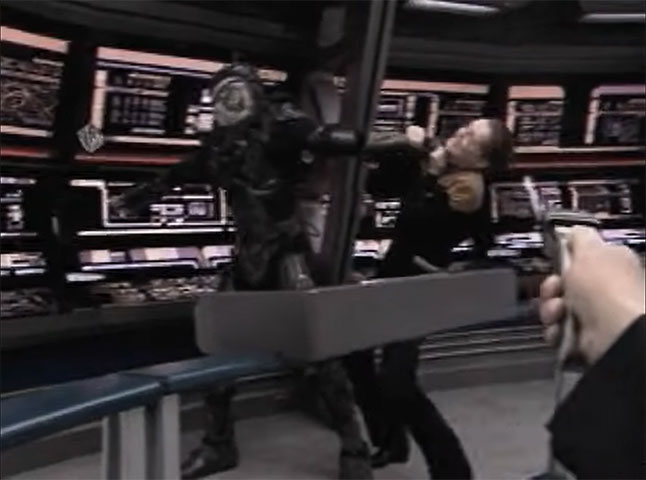
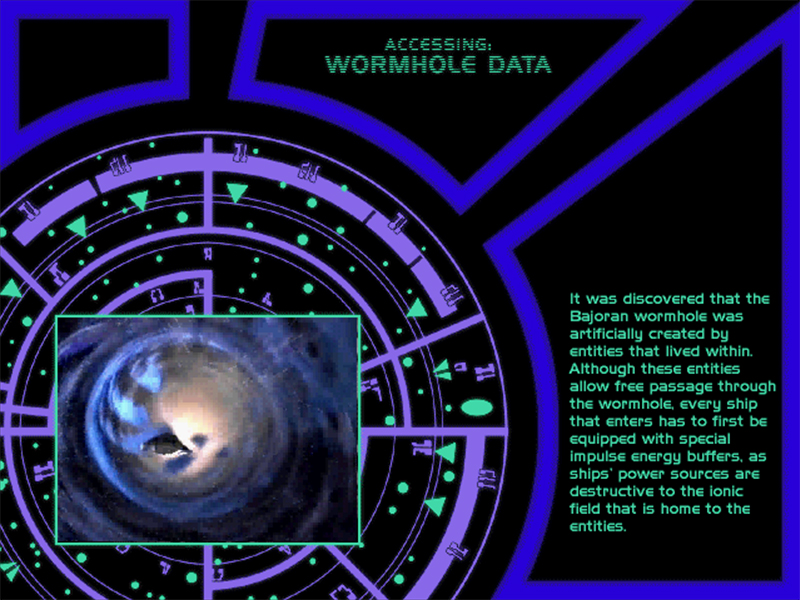
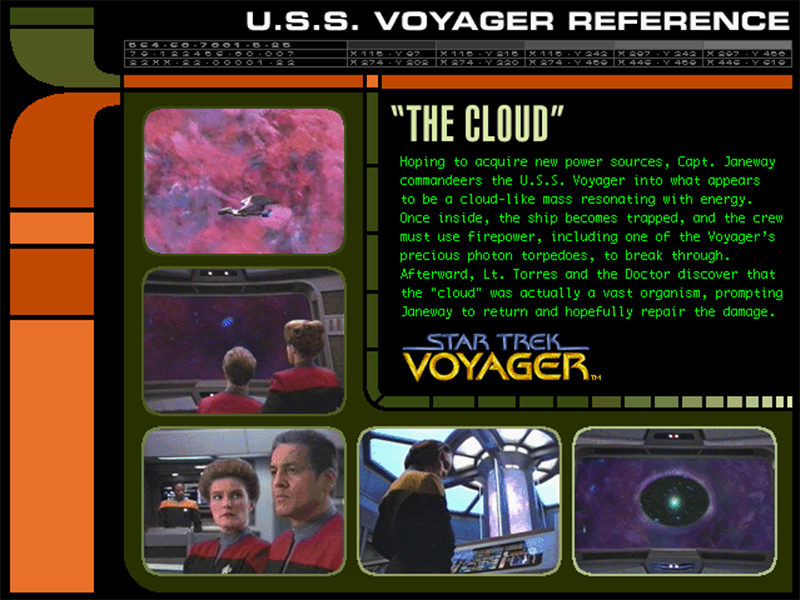

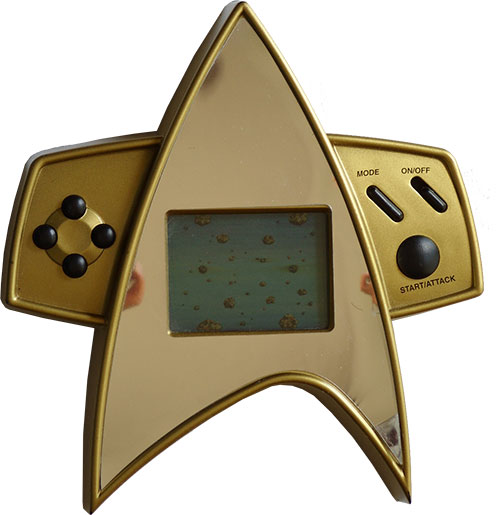

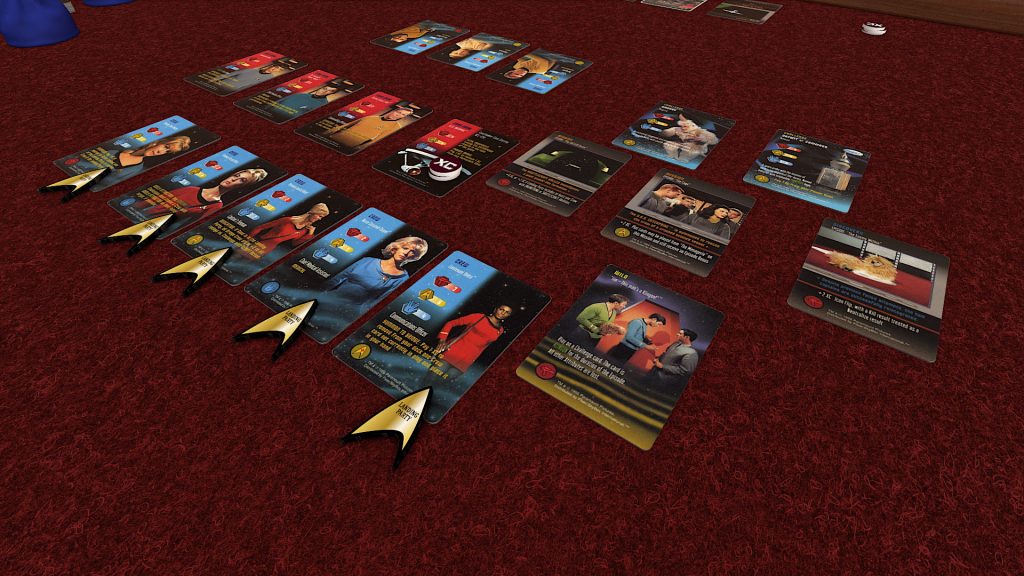











 . It's funny that you could use those shells as Picard, imagine him crawling into one of those and floating around
. It's funny that you could use those shells as Picard, imagine him crawling into one of those and floating around 

